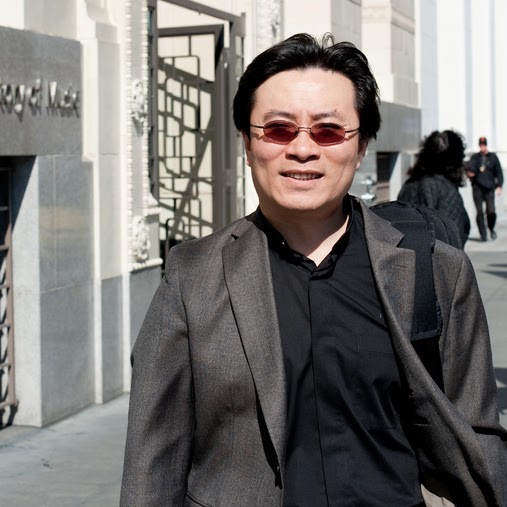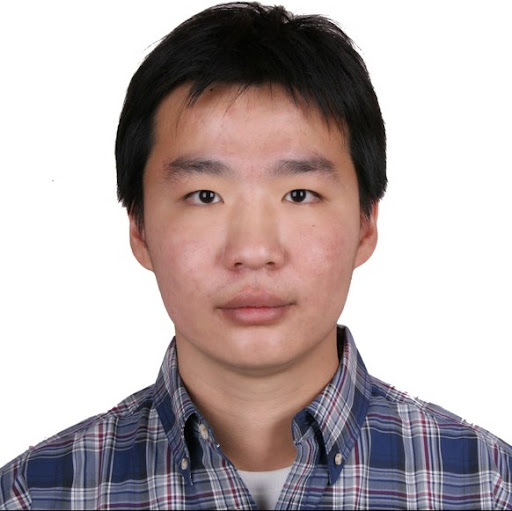Wei He
age ~58
from South Setauket, NY
- Also known as:
-
- Wei Hu
- Wei Huang
- Phone and address:
-
348 Mark Tree Rd, South Setauket, NY 11720
(631)3984286
Wei He Phones & Addresses
- 348 Mark Tree Rd, S Setauket, NY 11720 • (631)3984286
- South Setauket, NY
- Fremont, CA
- Miami, FL
Lawyers & Attorneys

Wei He - Lawyer
view sourceAddress:
Clifford Chance LLP
(106)5352288 (Office)
(106)5352288 (Office)
Licenses:
New York - Currently registered 2010
Education:
Cornell Law School
Specialties:
Antitrust / Trade Law - 34%
Arbitration - 33%
Litigation - 33%
Arbitration - 33%
Litigation - 33%
Isbn (Books And Publications)

Us Patents
-
Genetic Modification Of C57 Mice
view source -
US Patent:7132282, Nov 7, 2006
-
Filed:Jan 30, 2004
-
Appl. No.:10/768350
-
Inventors:Wei He - South Setauket NY, US
Wei Weng - Patchogue NY, US -
Assignee:Ingenious Targeting Inc. - Stony Brook NY
-
International Classification:C12N 5/00
C12N 5/02
C12N 5/06
C12N 5/10
C12N 15/00 -
US Classification:435354, 435325, 800 21, 800 25
-
Abstract:The present invention relates generally to the field of generating genetically modified C57 mice. More particularly, the present invention pertains to 1) blastocyst-derived mouse embryonic stem cell (ES) cell lines including, but not limited to, the IC1, IC2, IAC1, IAC2, IAC3, IAC4, IAC5, IAC6, IAC7 or IAC8 ES cell line, 2) to efficient methods of making genetically modified C57 mice by introducing the modified C57 ES cells into the mouse blastocysts of either the same mouse strain and/or color of albino C57 strain, or other C57 strain, to generate genetically modified novel, useful and hereto unknown models of C57 mice, and to methods for identifying the chimerism of chimeras which can be not known by coat color.
-
Industry Standard Multi-Well Plates With Increased Capacity And Efficiency Per Well
view source -
US Patent:20050265902, Dec 1, 2005
-
Filed:May 27, 2004
-
Appl. No.:10/855073
-
Inventors:Ellen Chen - Patchogue NY, US
Wei He - South Setauket NY, US
Wei Weng - Patchogue NY, US -
International Classification:B01L009/00
-
US Classification:422104000
-
Abstract:The invention provides for improved multi-well plates and platforms that comprise a plurality of wells having increased volume capacity and clustered in a standard multi-well plate format and dimensions, said multi-well plate format being compatible with auxiliary equipment currently used and designed for the particular multi-well plate format. More particularly, the invention provides improved multi-well plates comprising a base to improve wells having one or more said wells having rectangular configuration, better retention of working materials and tissue culture ingredients than observed in conventional round-shaped wells. A cover is provided for protecting the assembly and cell cultures.
-
Apolipoprotein Nanodiscs With Telodendrimer
view source -
US Patent:20130165636, Jun 27, 2013
-
Filed:Dec 19, 2012
-
Appl. No.:13/719785
-
Inventors:The Regents of The University of California - Oakland CA, US
Wei He - Davis CA, US
Kit S. Lam - Davis CA, US
Paul Henderson - Dublin CA, US
Matt Coleman - Oakland CA, US -
Assignee:The Regents of the University of California - Oakland CA
-
International Classification:C07K 17/02
-
US Classification:530359, 435 681
-
Abstract:The present invention provides a nanodisc with a membrane scaffold protein. The nanodisc includes a membrane scaffold protein, a telodendrimer and a lipid. The membrane scaffold protein can be apolipoprotein. The telodendrimer has the general formula PEG-L-D-(R), wherein D is a dendritic polymer; L is a bond or a linker linked to the focal point group of the dendritic polymer; each PEG is a poly(ethylene glycol) polymer; each R is and end group of the dendritic polymer, or and end group with a covalently bound hydrophobic group, hydrophilic group, amphiphilic compound, or drug; and subscript n is an integer from 2 to 20. Cell free methods of making the nanodiscs are also provided.
-
Direct-Lit Backlight Units With Light-Emitting Diodes
view source -
US Patent:20230093750, Mar 23, 2023
-
Filed:Nov 4, 2021
-
Appl. No.:17/519221
-
Inventors:- Cupertino CA, US
Meizi Jiao - San Jose CA, US
Ling Han - Santa Clara CA, US
Chungjae Lee - San Jose CA, US
Ziruo Hong - San Jose CA, US
Wei He - Cupertino CA, US
Rong Liu - Sunnyvale CA, US
Xinyu Zhu - San Jose CA, US
Mingxia Gu - Campbell CA, US
Jun Qi - San Jose CA, US
Eric L. Benson - Hillsborough CA, US
Victor H. Yin - Cupertino CA, US -
International Classification:G02F 1/13357
-
Abstract:A display may have a pixel array such as a liquid crystal pixel array. The pixel array may be illuminated with backlight illumination from a direct-lit backlight unit. The backlight unit may include an array of light-emitting diodes (LEDs) on a printed circuit board. The display may have a notch to accommodate an input-output component. Reflective layers may be included in the notch. The backlight may include a color conversion layer with a property that varies as a function of position. The light-emitting diodes may be covered by a slab of encapsulant with recesses in an upper surface.
-
Electronic Device With Battery Capability Modeling
view source -
US Patent:20180345812, Dec 6, 2018
-
Filed:Aug 21, 2017
-
Appl. No.:15/682331
-
Inventors:- Cupertino CA, US
Yiming Lou - Cupertino CA, US
Wei He - Sunnyvale CA, US
Stephen D. Sterz - San Jose CA, US -
International Classification:B60L 11/18
G01R 31/36
H01M 10/48 -
Abstract:An electronic device may have a power system with a battery. The device may include power management circuitry that helps distribute power from the battery to components within the device. To prevent an excessive load from being applied to the battery and the battery from dropping below a cut-off voltage, power management circuitry may control power consumption by components in the device. Power consumption models in the power management circuitry may be used to ensure that maximum allowable power consumption levels are not exceeded. To help accurately and quickly manage power consumption decisions, each component may have characteristic power consumption values that characterize the power consumption profile of the component. These characteristic power consumption values may be provided to the power management circuitry with a request for power consumption and the power management circuitry may determine maximum allowable power consumption for the component based on the characteristic power consumption values.
Medicine Doctors

Wei He, Stony Brook NY - PA (Physician assistant; also Posterior–anterior)
view sourceSpecialties:
Surgical Assistance
Address:
Stony Brook University Medical Ctr, Stony Brook, NY 11794
(631)4441820 (Phone), (631)4448963 (Fax)
(631)4441820 (Phone), (631)4448963 (Fax)
Languages:
English

Wei He, Stony Brook NY
view sourceSpecialties:
Physician Assistant
Address:
Stony Brook University Medical Ctr, Stony Brook, NY 11794
Name / Title
Company / Classification
Phones & Addresses
Owner
South Legend Restaurant
Eating Place · Full-Service Restaurants
Eating Place · Full-Service Restaurants
1720 N Milpitas Blvd, Milpitas, CA 95035
(408)9343970
(408)9343970
Chairman
He Wei
Business Services at Non-Commercial Site · Nonclassifiable Establishments
Business Services at Non-Commercial Site · Nonclassifiable Establishments
348 Mark Tree Rd, South Setauket, NY 11720
PRESIDENT
EN PING CORPORATION
220 Captain Thomas Blvd, West Haven, CT 06516
220 Captain Thomas Blvd, Fairfield, CT 06825
633 S Benson Rd, Fairfield, CT 06825
220 Captain Thomas Blvd, Fairfield, CT 06825
633 S Benson Rd, Fairfield, CT 06825
INJECTIONAID INC
Business Services at Non-Commercial Site · Nonclassifiable Establishments
Business Services at Non-Commercial Site · Nonclassifiable Establishments
348 Mark Tree Rd, Centereach, NY 11720
President
WILL, INC
5820 Central Ave #3, Albany, CA 94706
5820 Central Ave, Richmond, CA 94530
5820 Central Ave, Richmond, CA 94530
President
S&H HIGHTECK
3567 Eggers Dr, Fremont, CA 94536
Director
China Interactive Education, Inc
Googleplus

Wei He
Work:
IBM
Education:
Georgia Institute of Technology - Industrial Engineering, National University of Singapore - Supply Chain Management

Wei He
Work:
San francisco conservatory of music - Violin faculty
Tagline:
Wei he violinist violin faculty san francisco conservatory of music

Wei He
Tagline:
DataMining rationality art literature sprite English university America freedom IT

Wei He

Wei He

Wei He

Wei He
About:
FORDHAM UNIVERSITY MSQF

Wei He
Myspace

Wei He
view source
Wei Xin He
view source
Wei He
view source
Wei He
view source
Wei He
view source
Wei He
view source
Wei He
view source
Wei He
view sourceClassmates

Wei He
view sourceSchools:
Kempner High School Sugar Land TX 2004-2008
Community:
Daniel Varney, Ashley Njeako

Wei He
view sourceSchools:
Beijing Bayi High School Beijing China 1969-1973

He Wei, J.D. Jenkins Midd...
view source
Beijing Bayi High School...
view sourceGraduates:
Liang He (1996-2000),
Zhang Third (1991-1995),
Hai Bing He (1994-1998),
Cao Ming (1997-2001),
Wei He (1969-1973)
Zhang Third (1991-1995),
Hai Bing He (1994-1998),
Cao Ming (1997-2001),
Wei He (1969-1973)

Kingsview Middle School, ...
view sourceGraduates:
Wei He (2002-2005),
Cheng He (2002-2005),
Marissa Dunham (1995-1999),
Michael Borsiquot (2001-2005),
Hanna Yi (2000-2004),
Vincent Wasonga (2001-2005)
Cheng He (2002-2005),
Marissa Dunham (1995-1999),
Michael Borsiquot (2001-2005),
Hanna Yi (2000-2004),
Vincent Wasonga (2001-2005)

University of Manitoba, W...
view sourceGraduates:
Geoffrey Crofts (1942-1946),
Judy Qiang Wei He (2003-2007),
Raphael Fobister (1975-1979)
Judy Qiang Wei He (2003-2007),
Raphael Fobister (1975-1979)

Kempner High School, Suga...
view sourceGraduates:
Wei He (2004-2008),
Lauren Johnson (2004-2008),
Zak Shakhshir (2003-2007),
Spurling Ruppert (1973-1977)
Lauren Johnson (2004-2008),
Zak Shakhshir (2003-2007),
Spurling Ruppert (1973-1977)

J.D. Jenkins Middle Schoo...
view sourceGraduates:
Tanya Garner (1989-1993),
He Wei (2004-2008),
Vicki Boggs (1985-1987),
Carol Zimmerly (1981-1982),
Jt Robinson (1982-1983),
Camelia Benitez (1983-1987)
He Wei (2004-2008),
Vicki Boggs (1985-1987),
Carol Zimmerly (1981-1982),
Jt Robinson (1982-1983),
Camelia Benitez (1983-1987)
Youtube
Flickr
Plaxo

Wei He
view sourceSingaporeSenior User Experience Designer at Hewlett Packard... Past: Human Factor Expert at Hewlett Packard, Senior User Experience Researcher at eBay, Senior...

He Wei
view sourceFortune Sun International

He Wei
view sourceMotorola
Get Report for Wei He from South Setauket, NY, age ~58












